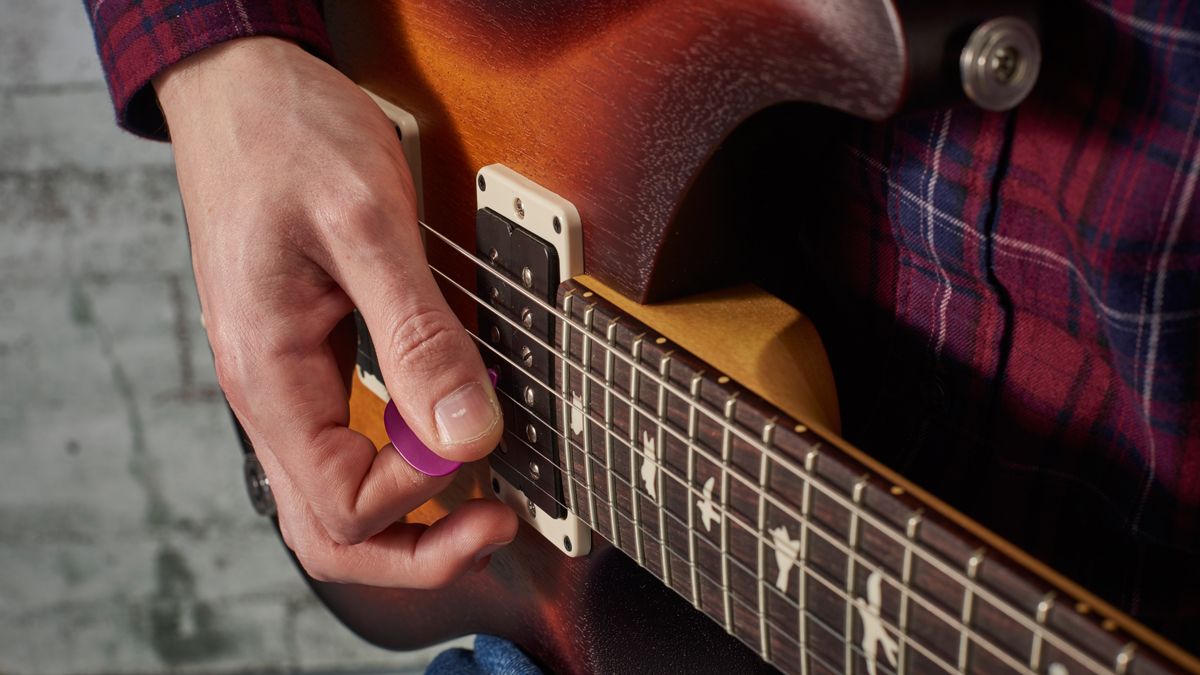Introduction
Introduction
When it comes to playing the electric guitar, the choice of pick can significantly impact the sound, feel, and overall playing experience. A guitar pick, also known as a plectrum, is a small, flat tool used to pluck or strum the strings of the guitar. While it may seem like a simple accessory, the type of pick you use can have a profound effect on your playing style and the tone produced by your instrument.
The selection of the right guitar pick is a highly personal decision, influenced by individual playing technique, musical genre, and personal preference. Whether you're a seasoned guitarist or just starting out, understanding the different types and materials of guitar picks can help you make an informed choice that complements your playing style and enhances your musical expression.
In this article, we will explore the various types and materials of guitar picks, from thin to heavy gauges and plastic to metal compositions. By delving into the characteristics and advantages of each pick type, you'll gain valuable insights to guide your selection process. Whether you prefer the flexibility of a thin pick, the versatility of a medium pick, or the robustness of a heavy pick, this comprehensive guide will equip you with the knowledge to make an informed decision. Let's dive into the world of guitar picks and uncover the nuances that can elevate your playing experience.
Types of Guitar Picks
When it comes to selecting a guitar pick, it’s essential to consider the various types available and their unique characteristics. Guitar picks come in different thicknesses, often referred to as gauges, which can significantly impact your playing style and the sound produced by your instrument. Let’s explore the three primary categories of guitar picks: thin, medium, and heavy.
- Thin Picks: Thin guitar picks, typically ranging from 0.40mm to 0.60mm, offer flexibility and a subtle attack on the strings. They are well-suited for strumming chords and producing bright, jangly tones. Guitarists who prefer intricate picking techniques and swift strumming often gravitate towards thin picks for their agility and responsiveness.
- Medium Picks: Medium gauge picks, with thicknesses typically ranging from 0.70mm to 0.85mm, strike a balance between flexibility and rigidity. They provide a versatile option for both strumming and single-note playing, catering to a wide range of musical styles. Guitarists who require a pick that can adapt to various playing techniques often find the medium gauge to be a reliable choice.
- Heavy Picks: Heavy gauge picks, usually 0.90mm and above, offer durability and a firm attack on the strings. These picks are favored by guitarists who prefer aggressive playing styles, such as heavy strumming and intricate lead guitar solos. The thickness and rigidity of heavy picks contribute to powerful, well-defined tones and sustained notes, making them ideal for rock, metal, and other high-energy genres.
Understanding the distinctions between these pick types can empower you to select the most suitable option based on your playing preferences and musical repertoire. Whether you prioritize flexibility, versatility, or robustness, the right pick can enhance your playing experience and influence the sonic character of your performances.
Thin Picks
Thin guitar picks, typically ranging from 0.40mm to 0.60mm in thickness, are prized for their flexibility and agility. These picks offer a delicate touch on the strings, making them well-suited for strumming chords and executing intricate picking patterns with ease. The pliable nature of thin picks allows for fluid, responsive playing, making them a popular choice among guitarists who favor a lighter touch and nuanced articulation.
One of the key advantages of thin picks is their ability to produce bright, shimmering tones, particularly when used for strumming acoustic or clean electric guitar parts. The subtle attack and flexibility of thin picks contribute to a lively, jangly sound that complements various musical styles, from folk and pop to indie and alternative rock. Additionally, the lightweight construction of thin picks minimizes resistance against the strings, enabling swift, effortless strumming and picking.
Guitarists who gravitate towards thin picks often appreciate their responsiveness to subtle changes in picking dynamics. The pliability of these picks allows for nuanced control over the tonal nuances produced, making them an excellent choice for expressive playing and dynamic range. Whether executing delicate fingerstyle passages or intricate arpeggios, thin picks provide the dexterity and precision needed to bring out the subtleties in your playing.
It’s important to note that while thin picks offer exceptional flexibility and articulation, they may not be as well-suited for heavy strumming or aggressive playing styles that require greater resistance and attack. However, for guitarists seeking a pick that facilitates nimble, expressive playing and imparts a bright, lively character to their sound, thin picks are a valuable asset in their musical toolkit.
Medium Picks
Medium gauge guitar picks, typically ranging from 0.70mm to 0.85mm in thickness, offer a versatile balance between flexibility and rigidity. This middle ground makes them well-suited for accommodating a wide range of playing styles and musical genres. Whether you prefer strumming chords, playing single-note melodies, or employing a combination of techniques, medium picks provide a reliable and adaptable option for expressing your musical creativity.
One of the key advantages of medium picks is their ability to offer a responsive feel while maintaining a degree of firmness. This characteristic allows guitarists to achieve a balanced attack on the strings, making medium picks suitable for both rhythm and lead playing. Whether you’re strumming through chord progressions or unleashing expressive solos, the moderate thickness of medium picks provides the stability and control needed to articulate your musical ideas with confidence.
Medium picks are prized for their ability to produce well-defined tones with a balanced mix of warmth and clarity. When used for strumming, they impart a satisfying depth to the chordal resonance, while their responsiveness to picking dynamics enables guitarists to articulate melodic passages with precision. This versatility makes medium picks a popular choice across various musical genres, from rock and blues to country and jazz.
Another noteworthy attribute of medium picks is their adaptability to different playing techniques. Whether you’re employing alternate picking, hybrid picking, or various strumming patterns, medium picks offer a reliable response and feel across diverse playing styles. Their moderate thickness strikes a harmonious equilibrium, allowing for fluid transitions between chordal accompaniment and lead embellishments, making them a go-to choice for many guitarists.
Ultimately, the versatility and balanced characteristics of medium picks make them a dependable option for guitarists seeking a pick that can effortlessly accommodate a spectrum of playing styles and musical expressions. Whether you’re exploring intricate fingerstyle arrangements, crafting emotive chord progressions, or unleashing dynamic lead solos, medium picks provide the stability and responsiveness to support your musical journey.
Heavy Picks
Heavy gauge guitar picks, typically 0.90mm and above in thickness, are prized for their durability and robust attack on the strings. These picks offer a firm, unyielding feel, making them well-suited for guitarists who prefer an aggressive playing style and require enhanced resistance and control. The thickness and rigidity of heavy picks contribute to powerful, well-defined tones and sustained notes, making them an ideal choice for genres that demand a bold, assertive sound, such as rock, metal, and hard-hitting blues.
One of the key advantages of heavy picks is their ability to impart a commanding presence to the guitar’s tone. When used for strumming, heavy picks deliver a substantial, full-bodied sound with pronounced articulation, making them ideal for driving rhythm parts and aggressive chord progressions. The solid attack and increased mass of heavy picks contribute to a punchy, defined sound that can cut through dense musical arrangements with clarity and authority.
Heavy picks are also favored for their ability to facilitate precise, articulate lead playing. The firmness and weight of these picks provide the necessary resistance for executing rapid, intricate picking patterns and unleashing searing guitar solos with confidence. The increased mass of heavy picks contributes to enhanced note definition and sustain, allowing guitarists to craft expressive melodies and dynamic phrasing with clarity and impact.
Another distinctive attribute of heavy picks is their resilience, making them well-suited for prolonged, intense playing sessions. The durability of heavy picks enables them to withstand rigorous strumming, aggressive picking, and heavy gauge strings, making them a reliable choice for guitarists who demand resilience and longevity from their picks.
Ultimately, heavy picks cater to guitarists who seek a pick that can withstand the rigors of high-energy playing while delivering a commanding, assertive sound. Whether you’re unleashing thunderous power chords, crafting blistering lead lines, or driving the rhythm with unyielding force, heavy picks provide the stability, resilience, and sonic impact to elevate your playing to new heights.
Materials of Guitar Picks
When selecting a guitar pick, the choice of material plays a crucial role in determining its tonal characteristics, durability, and feel. Guitar picks are crafted from various materials, each offering distinct sonic properties and tactile experiences. Understanding the unique attributes of different pick materials can guide you in choosing a pick that aligns with your tonal preferences and playing style. Let’s explore some of the most common materials used in guitar pick construction:
- Plastic Picks: Plastic picks, often made from materials such as acetal, polycarbonate, or Delrin, are renowned for their versatility and durability. These picks offer a balanced tonal response, providing a crisp attack and clear note articulation. Additionally, plastic picks are available in a wide range of thicknesses, catering to diverse playing preferences and musical genres. Whether you seek a bright, articulate sound for lead playing or a warm, rounded tone for rhythm work, plastic picks provide a reliable option for shaping your sonic palette.
- Nylon Picks: Nylon picks are characterized by their flexibility and smooth playing surface. Crafted from nylon polymers, these picks offer a pliable feel that enhances dynamic control and expressiveness. Nylon picks are favored for their ability to produce a warm, mellow tone, making them well-suited for genres that benefit from a softer, more rounded sound, such as jazz and acoustic folk music. The gentle attack and forgiving nature of nylon picks make them an excellent choice for guitarists seeking a pick that facilitates nuanced, emotive playing.
- Celluloid Picks: Celluloid picks, known for their vintage aesthetic and vibrant color options, offer a classic tone with a hint of warmth and depth. These picks provide a balanced blend of flexibility and rigidity, making them suitable for a wide range of playing styles. Celluloid picks are revered for their ability to impart a rich, resonant character to the guitar’s sound, making them a popular choice for players seeking a traditional, timeless tonal quality.
- Metal Picks: Metal picks, crafted from materials such as stainless steel, brass, or titanium, offer a distinct tonal signature characterized by bright, aggressive attack and exceptional durability. These picks are prized for their ability to produce a cutting, metallic sound that lends itself well to genres requiring precision and articulation, such as heavy metal and hard rock. The rigid, unyielding nature of metal picks provides a firm, assertive feel, making them an ideal choice for guitarists who demand maximum control and definition in their playing.
By considering the sonic attributes, feel, and durability of different pick materials, you can make an informed decision that complements your playing style and enhances your musical expression. Whether you prioritize tonal clarity, flexibility, warmth, or assertive attack, the diverse range of pick materials available empowers you to tailor your sound and playing experience to suit your artistic vision.
Plastic Picks
Plastic picks are among the most widely used and versatile options in the realm of guitar picks, offering a diverse array of tonal characteristics and playing experiences. Crafted from materials such as acetal, polycarbonate, or Delrin, plastic picks are celebrated for their durability, balanced tonal response, and availability in a wide range of thicknesses. Whether you’re seeking a bright, articulate sound for lead playing or a warm, rounded tone for rhythm work, plastic picks provide a reliable option for shaping your sonic palette.
One of the key advantages of plastic picks is their ability to deliver a crisp attack and clear note articulation. When used for strumming or single-note playing, plastic picks impart a defined, articulate sound that cuts through the mix with precision. The balanced tonal response of plastic picks makes them suitable for a broad spectrum of musical genres, from rock and blues to pop and country, offering a versatile platform for expressing your musical ideas.
Additionally, the durability of plastic picks makes them well-suited for prolonged playing sessions and rigorous performance demands. Whether you’re engaging in aggressive strumming or intricate lead playing, plastic picks offer resilience and longevity, ensuring that they can withstand the rigors of intense playing without compromising their tonal integrity.
Furthermore, the availability of plastic picks in various thicknesses allows guitarists to tailor their playing experience to suit their preferences. Whether you prefer the flexibility and agility of thin picks or the firm attack of heavy picks, the diverse range of plastic pick options empowers you to customize your playing feel and tonal characteristics to align with your artistic vision.
Ultimately, plastic picks stand as a versatile and dependable choice for guitarists seeking a pick that combines durability, balanced tonal response, and a wide range of customization options. Whether you’re crafting intricate melodies, driving dynamic rhythm parts, or unleashing expressive solos, plastic picks provide the stability and versatility to support your musical journey and sonic exploration.
Nylon Picks
Nylon picks are revered for their unique blend of flexibility, smooth playing surface, and ability to produce a warm, mellow tone. Crafted from nylon polymers, these picks offer a pliable feel that enhances dynamic control and expressiveness, making them a popular choice among guitarists seeking a pick that facilitates nuanced, emotive playing.
One of the distinctive characteristics of nylon picks is their forgiving nature, which allows for a gentle attack on the strings. This attribute contributes to a softer, more rounded sound, making nylon picks well-suited for genres that benefit from a mellower tonal quality, such as jazz and acoustic folk music. The warm, mellow tone produced by nylon picks adds a touch of sweetness to chordal accompaniments and melodic passages, creating a pleasing sonic backdrop for musical expression.
Furthermore, the smooth playing surface of nylon picks enhances their glide across the strings, offering a seamless playing experience that encourages fluidity and finesse. Whether you’re executing intricate fingerstyle patterns, crafting emotive arpeggios, or engaging in delicate single-note playing, nylon picks provide a tactile connection that amplifies the nuances of your playing technique.
Another notable advantage of nylon picks is their ability to offer a balanced blend of flexibility and durability. This balance allows for a reliable response to picking dynamics while ensuring longevity and resilience during extended playing sessions. Whether you’re engaging in subtle, delicate playing or unleashing expressive phrasing, nylon picks provide the stability and pliability to support a wide range of musical expressions.
Ultimately, nylon picks stand as a compelling choice for guitarists seeking a pick that imparts a warm, mellow tone, facilitates dynamic control, and offers a smooth, forgiving playing experience. Whether you’re exploring soulful jazz compositions, crafting introspective acoustic ballads, or delving into folk-inspired arrangements, nylon picks provide the versatility and tactile connection to enrich your musical journey and bring out the expressive depth of your playing.
Celluloid Picks
Celluloid picks are renowned for their classic aesthetic, vibrant color options, and ability to impart a rich, resonant character to the guitar’s sound. Crafted from cellulose nitrate, these picks offer a timeless tonal quality with a hint of warmth and depth, making them a popular choice for players seeking a traditional, vintage-inspired sound.
One of the key attributes of celluloid picks is their balanced blend of flexibility and rigidity, providing guitarists with a versatile platform for expressing their musical ideas. Whether you’re strumming through chord progressions, executing melodic passages, or engaging in intricate lead playing, celluloid picks offer a reliable response and feel across diverse playing styles, making them a go-to choice for many guitarists.
Furthermore, the smooth, polished surface of celluloid picks enhances their glide across the strings, offering a seamless playing experience that encourages fluidity and finesse. This characteristic enables guitarists to execute intricate picking patterns and articulate melodic passages with precision, enhancing their expressive control and dynamic range.
Another notable advantage of celluloid picks is their ability to produce a balanced, resonant tone with a touch of warmth. When used for strumming, celluloid picks deliver a satisfying depth to the chordal resonance, while their responsiveness to picking dynamics allows guitarists to articulate nuanced tonal variations with clarity and expressiveness.
Additionally, the vintage aesthetic and vibrant color options of celluloid picks add a touch of personality and style to the guitarist’s toolkit. Whether you’re drawn to the classic tortoiseshell patterns or vibrant, translucent hues, celluloid picks allow you to express your individuality and artistic flair through your choice of pick design.
Ultimately, celluloid picks stand as a compelling choice for guitarists seeking a pick that imparts a timeless tonal quality, offers a balanced blend of flexibility and rigidity, and adds a touch of vintage-inspired character to their playing. Whether you’re crafting soulful blues licks, strumming through folk-inspired ballads, or unleashing dynamic rock riffs, celluloid picks provide the versatility and tonal richness to elevate your musical expression and bring a classic, timeless quality to your playing.
Metal Picks
Metal picks are characterized by their distinct tonal signature, offering a bright, aggressive attack and exceptional durability. Crafted from materials such as stainless steel, brass, or titanium, these picks are prized for their ability to produce a cutting, metallic sound that lends itself well to genres requiring precision and articulation, such as heavy metal and hard rock.
One of the key advantages of metal picks is their firm, assertive feel, providing guitarists with maximum control and definition in their playing. The rigid, unyielding nature of metal picks allows for a commanding presence in the guitar's tone, making them an ideal choice for driving rhythm parts and unleashing expressive lead solos with confidence.
Furthermore, the durability of metal picks makes them well-suited for prolonged, intense playing sessions. Whether you're engaging in aggressive strumming, intricate picking, or employing heavy gauge strings, metal picks offer resilience and longevity, ensuring that they can withstand the demands of high-energy playing without compromising their tonal integrity.
Additionally, the bright, aggressive attack of metal picks contributes to their ability to cut through dense musical arrangements with clarity and authority. When used for lead playing, metal picks deliver searing, well-defined notes with exceptional articulation, allowing guitarists to craft expressive melodies and dynamic phrasing that stand out in the mix.
Metal picks also offer a distinctive tactile experience, with their substantial weight and solid feel enhancing the guitarist's connection to the instrument. This tactile feedback empowers guitarists to execute precise, articulate playing with a heightened sense of control, making metal picks a compelling choice for players who demand maximum responsiveness and stability in their playing experience.
Ultimately, metal picks stand as a compelling choice for guitarists seeking a pick that imparts a bright, aggressive attack, offers exceptional durability, and provides a commanding, assertive presence in their playing. Whether you're unleashing thunderous power chords, crafting blistering lead lines, or driving the rhythm with unyielding force, metal picks provide the stability, resilience, and sonic impact to elevate your playing to new heights.
Conclusion
Choosing the right guitar pick is a highly personal decision that can significantly influence your playing style, tonal characteristics, and overall musical expression. By exploring the various types and materials of guitar picks, you gain valuable insights to guide your selection process and enhance your playing experience.
Thin picks, prized for their flexibility and subtle attack, offer a delicate touch on the strings, making them well-suited for strumming chords and intricate picking patterns. Medium picks strike a balance between flexibility and rigidity, catering to a wide range of playing styles and musical genres, while heavy picks provide durability and a firm attack on the strings, ideal for aggressive playing styles and powerful tones.
Furthermore, the diverse range of pick materials, from plastic and nylon to celluloid and metal, offers a spectrum of tonal characteristics, tactile experiences, and durability. Whether you seek a bright, articulate sound, a warm, mellow tone, a vintage-inspired character, or a bright, aggressive attack, the array of pick materials empowers you to tailor your sound and playing experience to suit your artistic vision.
Ultimately, the selection of a guitar pick is a dynamic and iterative process, influenced by your playing technique, musical repertoire, and tonal preferences. By understanding the nuances of different pick types and materials, you can make an informed decision that complements your playing style and elevates your musical expression. Whether you’re crafting soulful melodies, driving dynamic rhythm parts, or unleashing expressive solos, the right pick serves as a vital tool in shaping your sonic identity and enhancing your musical journey.
As you continue to explore the world of guitar picks and refine your playing technique, remember that the perfect pick is the one that resonates with your artistic vision and empowers you to express yourself with authenticity and creativity. Embrace the diversity of pick types and materials, experiment with different options, and let your musical intuition guide you towards the pick that enhances your playing experience and unlocks new dimensions of sonic expression.

























